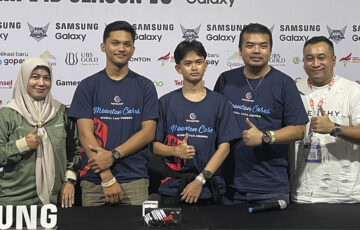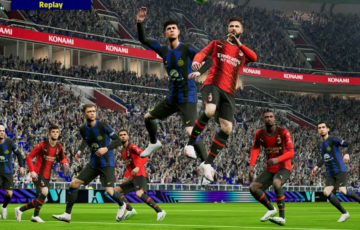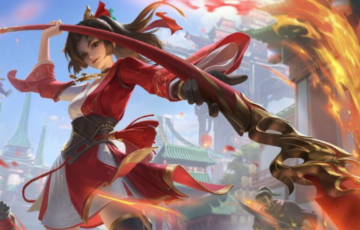Jakarta, 2 February 2024 – Omnicom Media Group Asia Pacific’s (OMG APAC) latest research titled ‘Unlocking Gamers in Asia Pacific’ reveals mobile is the most preferred gaming device among the 1,021 Indonesians surveyed (96%) and even more so for 61% of Indonesians who game daily.
The domination of mobile gaming surpasses APAC countries known for gaming including Malaysia (93%), China (93%), Thailand (92%), and South Korea (74%). This could be attributed to the cost of smartphones being significantly cheaper and more accessible in Indonesia than other gaming equipment. Therefore, mobile gaming has a higher chance of giving brands a bang for their buck and should be utilised for top funnel activations.
Nonetheless, PC and console still has a target audience in Indonesia due to the popularity of portable devices like Switch. These devices are also perceived to offer a more immersive experience, better quality of and more in-depth games, and the level of gameplay is more competitive than mobile, creating a more intense and time consuming environment. Brands are advised to encourage social/multiplayer interactions in their PC and console gaming integrations.
According to PwC, ad revenue for gaming is projected to double between 2022 and 2027 and reach US$100 billion globally in 2025. The industry is not losing steam in Southeast Asia either as it is now worth $6.9 billion and backed by 270 million gamers.
The research aims to offer a better understanding of Indonesian gamers and covers four areas: gaming behaviours, gaming preferences, online engagement, and advertising and brand attitudes.
Rajat Basra, OMG Indonesia CEO, said, “Mobile gaming presents a great opportunity for brands to jump on but they still need to be strategic in their collaborations and ensure in-game activations blend in with the gaming environment. With people playing on the go, everyone is considered a gamer today and brands need to be smart about how they target them during different moments and with different experiences.”
For brands eager to target Indonesian gamers, here are some key consumer needs and behaviours to take note of.
Mobile gaming domination in Indonesia
1. Research gamers’ interest in your industry; incentivise gamers for their time
The gaming industry presents numerous opportunities for brands but companies should still be strategic about their investments. Indonesians’ interests mainly cover films/cinema (53%), sports (50%), travel (44%), technology (44%), and shopping (41%). Therefore, it might be helpful for marketers to recognise if there is an interest in their industry among Indonesian gamers.
Also, gamers love to be targeted with in-game collaborations on mobile but moderation is crucial. Brands need to tailor their executions to address gamers’ needs including rewarding them for watching ads, having one-off collaborations, and offering rewards for limited-time objectives.
Frequency needs to be a key part of media planning to prevent gamers from being overexposed to ads or seasonal experiences.
Likewise, PC and console gamers want value-added experiences including one-off activations, rewards for achieving limited-time objectives, having seasonal in-game ads, and seeing their favourite brands get involved in gaming.
Brand activations for these group of gamers require a diverse approach, i.e. mobile gaming interactions are upper funnel oriented and supporting channels are utilised for lower funnel interactions. Also, brands need to ensure they find a natural place in the mobile gaming environment to increase their chances of being positively received by gamers.
Another approach to targeting mobile, PC, and console gamers is leveraging influencers and content creators. Over a third of Indonesian gamers engage with influencers two to three times a week, while another third of those aged 18 to 34 years old engage with them daily.
In general, they mainly interact with posts and videos or watch livestreams. That said, some also engage with like-minded individuals on online gaming communities such as Discord.
2. Target gamers during their planned gaming schedules
Gaming sessions are seen by Indonesian gamers as an avenue to unwind from stress and pass time. Be it mobile, PC, or console, gamers mainly game after work/school or during their holiday break. In fact, over two-thirds of respondents plan time to game, with sessions lasting for 1-2 hours on weekdays and 3-4 hours on weekends. Those aged 45-54, however, are split on having a scheduled time to game.
Although gaming is viewed as a positive experience by Indonesian gamers, they stop because of busy schedules (51%), intrusive pop-up ads (43%), and games not running smoothly on the device (32%). Brands need to ensure moderation is practiced and the games they collaborate on work with the current technology available in the market.
3. A multi-gaming genre might be your best bet
The most popular mobile game genre is multiplayer online battle arena (MOBA), followed by tile matching, first-person shooter, board/card games, and sports. Aside from MOBA, the rest of the genres are quick, easy-to-play games that enable gamers to connect with others on the go.
MOBA is the most popular with those aged 18 to 44 while tile matching and board/card games are more popular with those aged 35 to 54. Brands are advised to choose a genre relevant to their target audience. That said, a multi-gaming strategy might be best if companies wish to target multiple generations.
4. Not all Indonesians consider themselves ‘gamers’
Slightly more than half (54%) of Indonesian gamers consider themselves gamers, sharing similar sentiments as counterparts in Singapore, Vietnam, Malaysia, and the Philippines. That said, the remainder who do not consider themselves gamers cite reasons such as only playing on their smartphone (49%), like those in Malaysia, Philippines, and Thailand. They also feel they do not play enough (39%) and that gaming is not their only hobby (38%).
These specific behaviour traits indicate respondents potentially feel the label requires a certain amount of weight and dedication to be able to identify themselves as such. It is important for brands to have tailored strategies for various audience segments. Brands can categorise them into ‘gamers’ or simply call them ‘players’ to remove the weight of being a gamer.
The research surveyed 1,021 respondents in Indonesia – 50% male and 50% female. 63% were based in major cities, 16% from minor cities, and 12% from towns. Most respondents were aged 35 to 44 (39%) and 25 to 34 (32%).
Overall, 12,204 respondents in Asia Pacific were surveyed across 13 markets. They are Australia, India, China, Indonesia, Philippines, Malaysia, Singapore, South Korea, Thailand, New Zealand, Taiwan, Hong Kong, and Vietnam. There is an equal gender split between male and female, and slightly more than two-thirds of respondents are aged 25 to 44 years old. The remaining 20% are aged 18 to 24 and 13% aged 45 to 54.


















